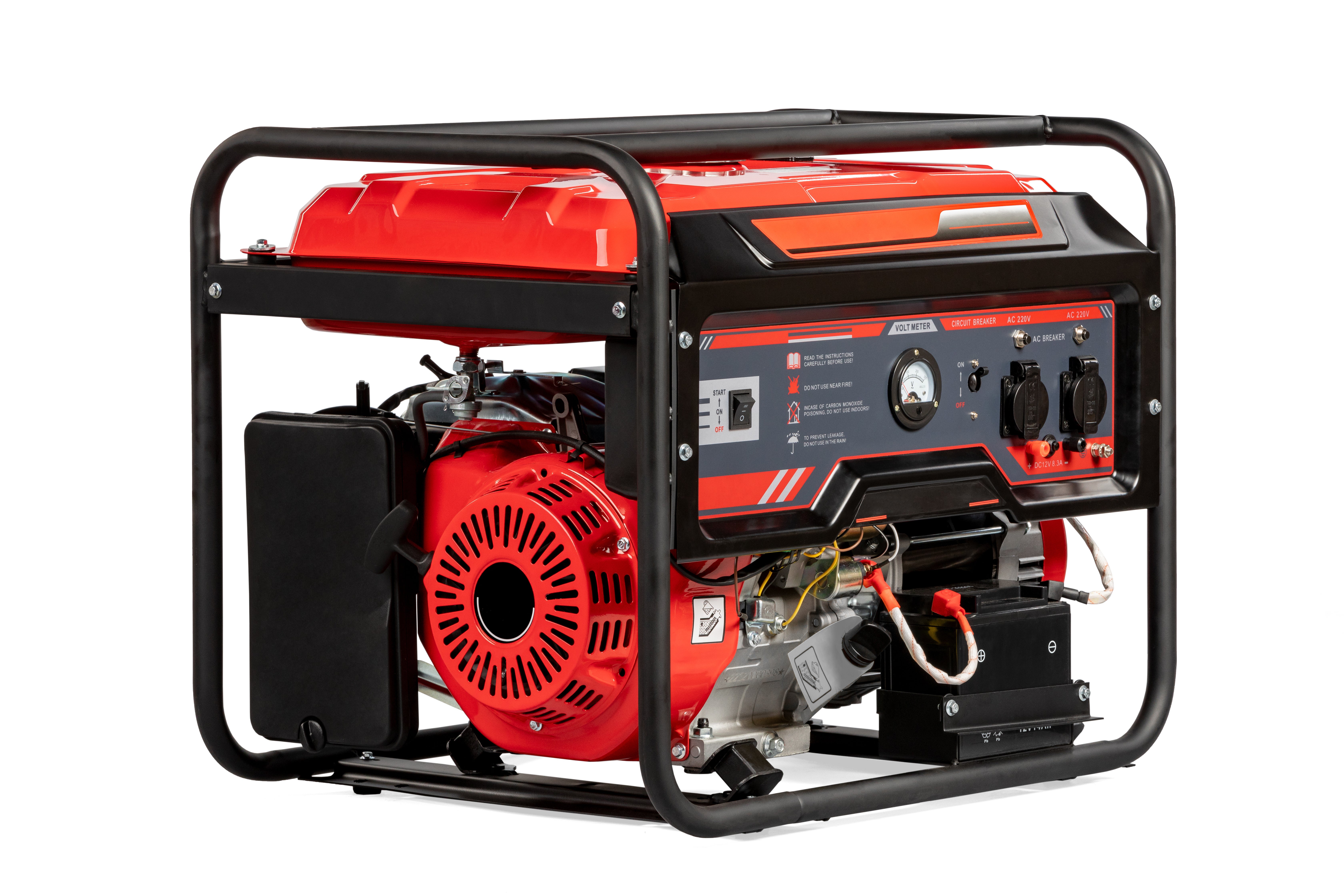Please call 1-800-794-1989 or use the SmartHub mobile app. To talk to a person, press zero.
Generators, portable or permanent, are handy to power life-sustaining medical equipment, provide a light or keep freezers from defrosting during prolonged power outages, but proper usage is important.
“Generators as a backup power source are handy, but should be used safely,” said Matt Lambert, FreeState Electric Cooperative’s Energy Use Coordinator. “Members need to make sure they are taking proper precautions when utilizing generators, including where you place a portable unit, weather conditions, and how it’s powered.”
There are two ways to connect portable generators to your home.
Powered Circuit Panel – Powering a generator in this way involves a power transfer switch, which monitors incoming voltage from FreeState lines. If you choose to install a generator in this manner, always use a certified electrician.
Direct Plug – Using heavy-duty extension cords directly plugged into a generator is an option to power a limited number of appliances. For example, a refrigerator or freezer.
Portable generators are typically gas-powered and moveable. Before using the unit, read and follow all the manufacturer instructions and recommendations. Check cords and ensure that the unit can handle the wattage or amperage of the appliances you plan to use it for. The generator should have more output than the wattage of your appliances plugged into it in order to create the extra electricity it takes for the initial power surge. Make certain there is nothing plugged into the generator when turning it on.
It is important to perform regular maintenance on your generator. It is recommended that generators be turned on once per month for 10 minutes to check for any issues.
Always use your generator in a dry area and make sure it is grounded properly. If conditions are damp, use the generator only if necessary. You can protect the unit during these conditions by putting it under an open, canopy-like structure. Make sure water cannot form under the unit.
“Never plug a generator into a wall outlet or structure,” said Lambert. “This causes back feeding and could electrocute a neighbor or FreeState lineman working to restore power.”
“A back feed is when electricity is fed back through a system and meter into the power line and that creates a problem for anyone that could be near that line, especially during prolonged storm outages,” Lambert added.
It’s important to allow your generator to shut down and cool before refueling, and to store the fuel away from the generator in the proper storage container.
Portable generators may be helpful, but there are also hazards members should be aware of. They include carbon monoxide poisoning from the exhaust, electric shock or electrocution, and fire risks. According to the Federal Emergency Management Agency (FEMA) most deaths and injuries associated with portable generators are from CO poisoning when generators are used indoors or partially enclosed spaces.
Take precautions against carbon monoxide poisoning. Never use the generator in closed areas or indoors and install a battery-operated carbon monoxide detector and test it often. Know the signs of carbon monoxide inhalation. Symptoms include dizziness, nausea, headaches, and lethargy. If you suspect you or someone you are with is showing these symptoms, get some fresh air and seek medical attention.
If you are using a permanent generator it must have a transfer switch installed by a certified electrician to avoid backfeeding. Due to the danger associated with this type of backup power source a transfer switch is required by the National Electrical Code.
Permanent or standby generators also pose significant risks if not installed safely correctly. Installing a permanent generator is extremely dangerous and not a do-it-yourself project. ALWAYS contact a certified electrician to install a permanent generator and follow these safety tips for using a generator:
Operate a portable generator in well-ventilated locations outdoors away from all doors, windows and vent openings to avoid carbon monoxide poisoning. The instructions that come with it are not meant for the recycle bin. Read and follow them; they are important.

Use generators safely with these helpful tips:
- Turn the generator on before using it. Once it’s running, turn your appliances and lights on one at a time to avoid overloading the unit.
- Generators are for temporary use and limited load; prioritize your needs.
- Never use a generator in a puddle or standing water and never touch with wet hands.
- To protect a portable generator from moisture, operate it on a dry surface under an open, canopy-like structure.
- Never use or install a generator in an attached garage, even with the door open.
- Turn off portable generators and let them cool down before refueling. Never refuel a generator while it is running.
- Store fuel for your portable generator in a container that is intended for the purpose and is correctly labeled as such. Store the containers outside of living areas.
- Keep children and pets away from generators, especially portable ones. Many generator components are hot enough to burn you during operation.
Generators can potentially put backfeed onto power lines, endangering the lives of lineworkers and emergency personnel. Click the link below to learn more about BackFeed.
